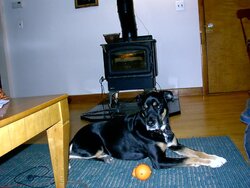I have a oil heat with hydronic baseboard heating. my concern is that once I get a wood stove installed it will be located in the same room that the thermostat is currently located. aka the boiler will never kick on because that one room will always be warmer then the rest of hte house because of the stove. leaving the rest of the house cold and risking pipes freezing.
Im just curious as to what others do with hydronic heat?
Has anyone here moved their thermostat? and how difficult of a job is it? Im thinking it may be better to move the thermostat to the master bedroom which is away from the where the wood stove will go. this way the heat will kick on and keep the pipes from freezing.
i miss electric heat already (thats right)
Maybe im better off draining my main level zone water, dealing with the cooler temps away from the stove and just running the hydronic heat on the other zone upstairs?
Im just curious as to what others do with hydronic heat?
Has anyone here moved their thermostat? and how difficult of a job is it? Im thinking it may be better to move the thermostat to the master bedroom which is away from the where the wood stove will go. this way the heat will kick on and keep the pipes from freezing.
i miss electric heat already (thats right)
Maybe im better off draining my main level zone water, dealing with the cooler temps away from the stove and just running the hydronic heat on the other zone upstairs?



